Kurt’s march for Judaism
Unlocking a family secret that was buried generations ago sent Kurt Brown on an unexpected journey.
ON a Wednesday afternoon at the local library, Kurt Brown was searching for a book to read.
Settling on a picture book about Anne Frank, he was casually glancing through when one page stopped Kurt in his tracks. “I didn’t want it to be true, but it was right in front of me and I couldn’t believe it,” he remembers.
It was a photograph of some Holocaust survivors bearing their tattooed arms. The numbers, Kurt realised, looked remarkably like the ones imprinted on his paternal great-grandmother, Anja’s arm.
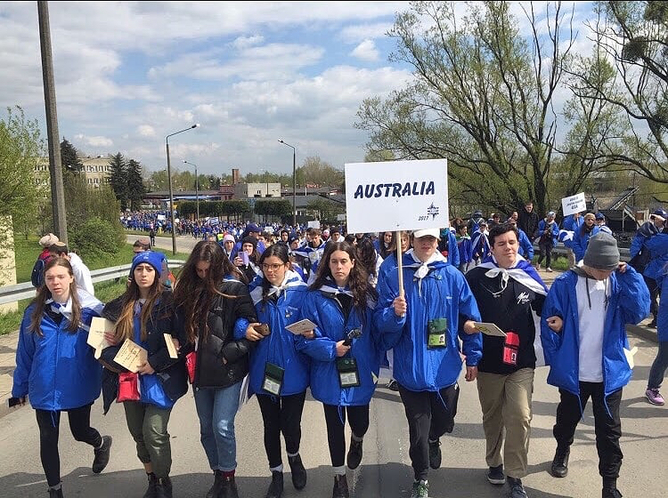
Kurt knew little about Anja’s former life except that she had moved from Europe to New Zealand and then to Australia after the war, that her brother Aaron died during the war, and somehow along the way, a series of small black numbers had been impressed on her forearm.
The photograph added a new piece to this convoluted puzzle.
Being an inquisitive 11-year-old, Kurt approached his grandmother, but it would be some time before his puzzle would be complete.
“She looked me dead in the eye and said, ‘don’t ask about it, don’t ever talk about it.’”
AWAKENED by the knowledge that the Holocaust had personally touched his ancestors, Kurt’s interest about his family’s history soon spiralled into a full-blown preoccupation, and his grandmother’s adverse reaction only served to enhance his curiosity.
“I became a little bit obsessed and I went crazy with the research. I had to know every single detail about the Holocaust and what had happened,” says Kurt.
Growing up on the Central Coast with his mother and stepfather, and spending most weekends with his father in Port Stephens, Kurt, now 19 and living in Sydney, had no real understanding of his Jewish heritage, describing his dad’s side as “radical Christian” and his mother’s side as atheist.
At 15 years of age, Kurt moved in with his father’s parents in Port Stephens, before living with his best friend and her family three years later.
The warmth of affection Kurt still carries for Anja today is readily apparent.
“She was wise and she made you feel like you mattered,” he reflects. “She was quiet but when she opened her mouth, she cracked you up.”
The special bond between them, despite being three generations apart, was unique and loving.
Kurt, Anja told him, bore an uncanny resemblance to her brother.
“When I hit puberty she got confused because her mind was dwindling and she thought I was him standing there,” explains Kurt. “Aaron was murdered in Birkenau when he was 13 … It was confronting in the sense that I was being told I look like this dead relative that died in such a brutal and horrific way at such a young age. I thought this was reincarnation.”
Eventually, Kurt worked up the courage to broach the ‘forbidden’ topic with his great-grandmother – and Anja was relieved to release the traumatic memories she harboured from the confines of her mind.
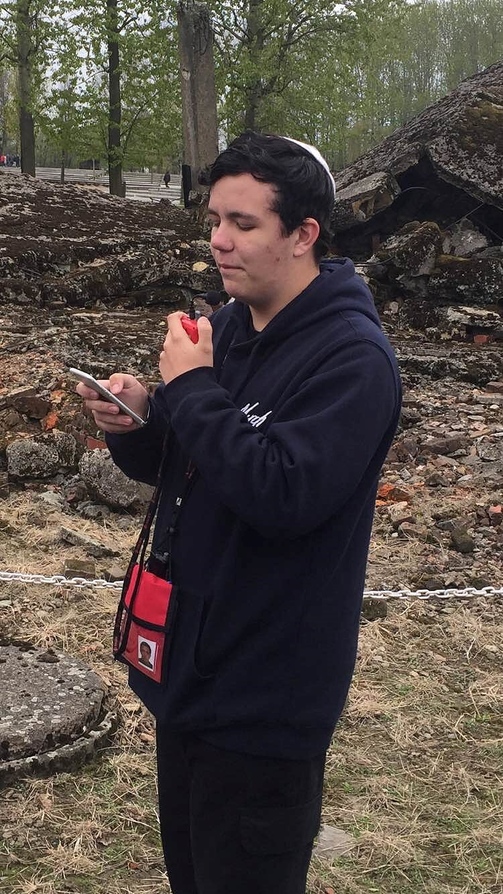
“She told me everything,” Kurt comments. “She told me that she had grown up as an aristocrat in the outskirts of Amsterdam. Her mum was of GermanFrench origin, and her dad was Polish … She said their lives were so normal, and with everything going on in the outside world, they were very ignorant of [what was happening]. They had talked about what would happen if there was an invasion. ‘What will happen to us? Nothing, because we are prominent,’ and they didn’t realise the Nazis went by racial status and not by class.”
But the time came when the family was deported to Westerbork transit camp.
From there, many in Anja’s extended family were sent to Sobibor death camp. Her father managed to ensure the immediate family escaped deportation, but the following week they were all transported to Auschwitz where her parents and siblings were killed, leaving Anja as the sole survivor – and Kurt, decades later, as the sole inheritor of the family’s traumatic tales.
“‘No one wanted to listen,’” Kurt recalls Anja saying.
“I asked her, ‘Who didn’t want to listen?’ And she said, ‘The world. No one wanted to hear what I had to say and everyone wanted to act like it never happened.’”
The horrors Anja battled, and the ongoing strain of keeping her emotional pain tightly constrained took a heavy toll. Kurt tells that Anja twice attempted to take her own life.
“Her exact words were, ‘they might not have killed me but they killed my soul.’”
THE story of Kurt’s great-grandmother opened his eyes to a new way of understanding the world, exposing him to an aspect of his family heritage which was previously unbeknownst to him, and inspiring him to embrace a new-found religious identity.
“Even as young as I was, I realised the seriousness of it,” comments Kurt.
When Anja passed away at age 91 in 2016, Kurt persevered with his constant research, exploring all mediums available to enrich his understanding of the Holocaust.
In Steven Spielberg’s documentary, The Last Days, a survivor by the name of Irene Zisblatt shared testimony about her experience on March of the Living (MOTL).
“[The program is] what inspired her to tell her story because all these young people wanted to hear what she had to say, and she had kept quiet like my grandma did,” Kurt remarks.
Viewing the documentary planted a seed in Kurt’s mind that perhaps, he too, could embark on a journey of Jewish discovery.
Then contacting the president of MOTL Cedric Geffen, Kurt told his entire story, for which Cedric had no words for by the end, Kurt relays, but he did say that anyone who identifies as Jewish is welcome on the program. “That made me feel really good because I wanted to be Jewish so desperately.”
THE haunting aura created a chill that pierced through any emerging spring warmth.
Poland is a cold place, Kurt says, “but this was different, this was supernaturally cold.”
As his group entered the main gate at Auschwitz, Kurt was holding onto the arm of his madrich, Andrea.
“I can’t believe I’m back here,” he remembers saying as they took their first steps through. “And then she said to me, ‘you’re not back here, you never were here.’
“I couldn’t grasp what I’d just said and it had completely slipped out, but I felt like I’d been back there.”
In a profoundly moving experience, as if walking in the shoes of his ancestor, Kurt gazed in the same direction his great-grandmother had always described when she spoke of the extermination of the Hungarian Jews in 1944.
Looking through the cracks of the barracks with her sisters, Anja described seeing hundreds of thousands of men, women and children walking, with bated breath, towards the crematorium, Kurt recalls.
As they went, she heard the soft, eerie sounds of young and old singing ‘L’shanah haba’ah b’Yerushalayim’, and then, with her sisters by her side, Anja witnessed a terrifying sight unfold.
“One SS woman snatched all the babies out of their mothers’ arms,” Kurt says, revisiting his many conversations with Anja. “They watched as the SS were throwing the infants into the flames, and her sister said the Mourner’s Kaddish for them … I remember looking at the fence and thinking, 73 years ago, scared girls were watching in horror at those events.
“I couldn’t grasp that I was literally in her footsteps right there.”
Gathered around an ash pond in the crematorium where Anja’s parents and brother Aaron were murdered, the group sang Kaddish, bringing Kurt closer to his heritage and Jewish identity that had been buried with his ancestors long ago.
“I remember thinking to myself, ‘this is the first time someone has said the Kaddish for those members of her family that were murdered … They are definitely still with me right now, because I can feel them being at peace with me trying to put them to rest.’”
KURT too can rest easier in the knowledge he has discovered a new religious identity, and a community he now calls family.
“March of the Living really did change my life and I stress that because Cedric has helped me so much, and all my madrichs,” he says.
The program also edged Kurt further along the pathway towards Judaism.
“There is a 13-year-old boy named Aaron soaked into the ground somewhere in Birkenau and he was murdered so viciously. I thought to myself, ‘I am going to live his life,’” Kurt states with proud conviction. “I want to make up for all those people that were murdered … By starting this one little root in the tree, it [will] expand.”
But embracing a Jewish life – with an eye to complete his conversion to Judaism and celebrate his bar mitzvah next year – has not been without its challenges.
While living in Port Stephens, Kurt says he “experienced nothing but antisemitism from people. I’ve been told to go back to the gas chambers … I actually had to go to the police because [someone] threatened to stab me to death”.
Unfortunately, antisemitism is not the only form of discrimination Kurt has been subjected to. “The area [was] not a good place to be gay as well. People say they aren’t homophobic but they are,” he dismays.
The ability for his sexual and religious identities to co-exist was an additional aspect drawing Kurt towards the Jewish faith.
“I liked that people could say, ‘we are Jewish and we are gay,’” says Kurt, who moved to Sydney a couple of months ago, and observes Shabbat among other Jewish practices.
“I do see myself as religious and I kind of need to believe in something that is watching out for me; otherwise this world is a terrible place.”
Holding certain prejudices – whether based on religion, race or sexuality or another factor – is not something Kurt considers himself exempt from.
In his youth, Kurt held certain preconceived ideas about the ‘other’ – and he is the first to admit so.
“There was a prejudice for anyone that wasn’t white when I was growing up, I held that prejudice as well, and I’ve always been very open to admitting that I was just as bad once.”
Finding out he had “the most unlikely link to a certain group” changed his perspective. “That’s what I want to stress,” Kurt says.
Besides telling a fascinating story rich with triumph and tragedy, he strives to stay true to his mission of teaching a powerful lesson.
“It’s made me more of an activist, and that’s how I use this story. The whole point is that I want to stand up for human rights, and I will never let anything happen on this scale to another group of people again.”
Get The AJN Newsletter by email and never miss our top stories Free Sign Up

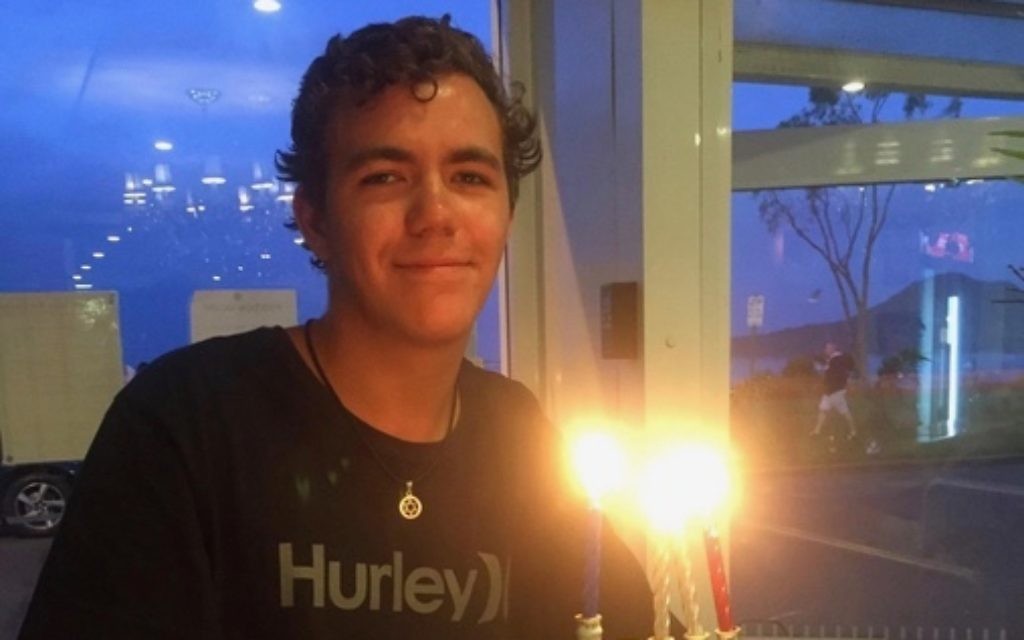
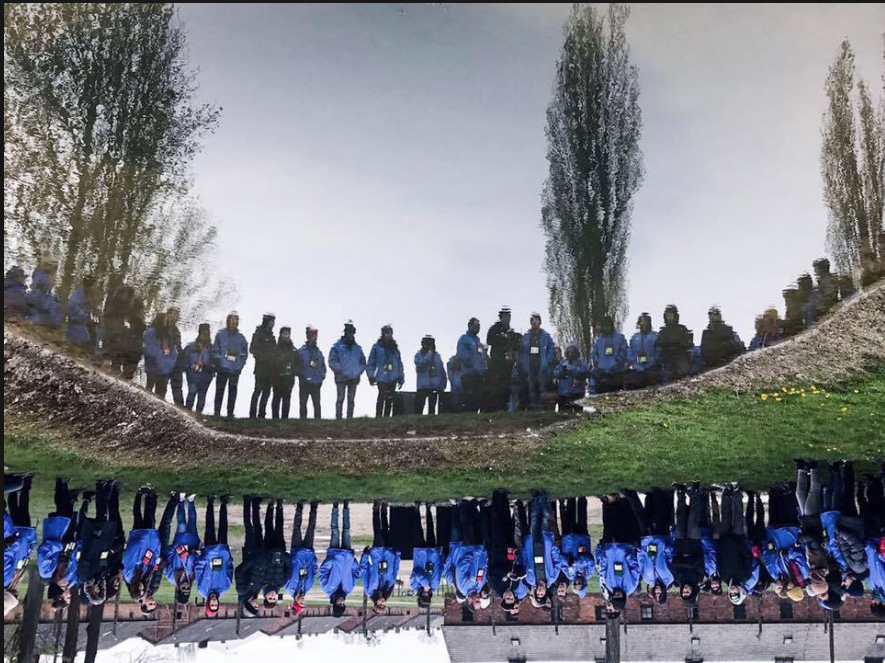
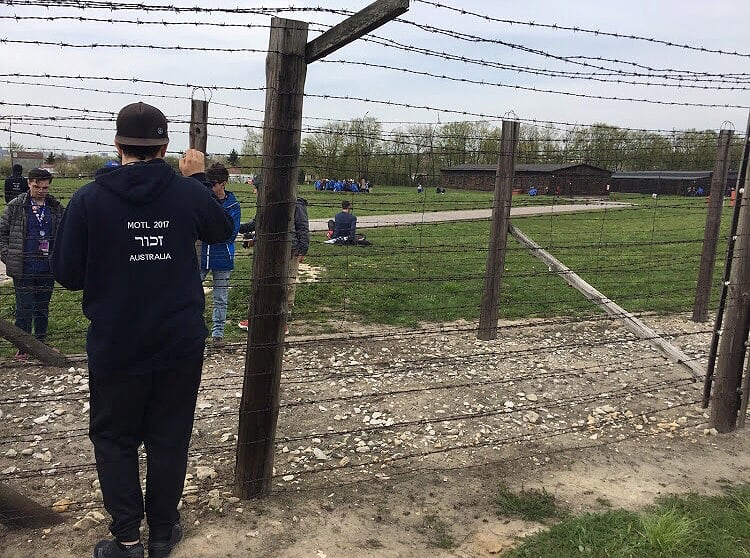
comments